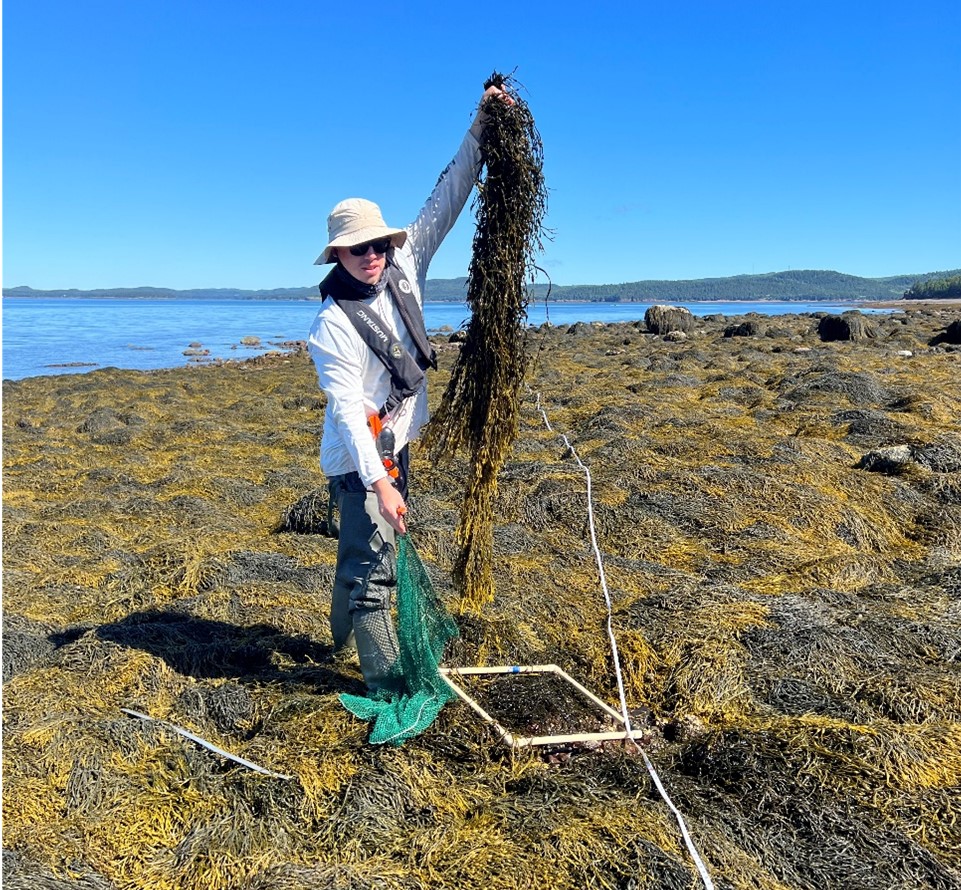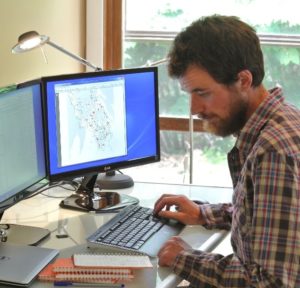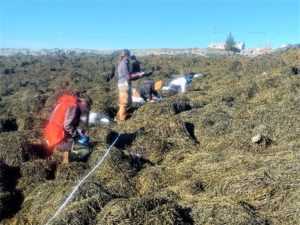News and Blog

How Dr. Bryan Morse and Our Resource Science Team Embody Seaweed Conservation
Most people know oceans cover 71% of our planet, but what’s not as common knowledge is that 50% to 80% of all life on Earth calls marine ecosystems home. As a result, almost every business worldwide has some impact on the continued wellbeing of this immense and critical biome. Whether businesses are a force for sustainable good or not depends on the actions they take along the way.
In 2015, all United Nation Member States adopted the 2030 Agenda for Sustainable Development. Within this document there are 17 Sustainable Development Goals, which are an urgent call for action by all countries to work in a global partnership on topics such as poverty, health and education, and reducing inequality while also tackling climate change and preserving life on land and below water. One important UN Sustainable Development Goal that directly relates to our business is #14, “Conserve and sustainably use the oceans, seas and marine resources for sustainable development.”
Since the beginning, Acadian Seaplants Limited has valued the intertidal habitats where wild seaweeds like Ascophyllum nodosum (commonly known as rockweed) grow and has made a concerted effort to promote seaweed and water conservation methods. Part of the reason we’ve had such great success is because of the efforts of our incredible Resource Science team. Recently, we had a chance to talk with Dr. Bryan Morse, Resource Scientist at Acadian Seaplants, to get his perspective on how our company is working to conserve and sustain marine resources and ecosystems.
How does your work contribute to UN Sustainable Development Goal 14?
The role of the Resource Science team is to know the condition of the Ascophyllum nodosum resource in all areas that Acadian Seaplants harvests. By knowing the biomass and length of the resource, and tracking it over time, we can always have a good picture of how much we can sustainably harvest and ensure this unique habitat is available for the fauna that lives within it.
By confirming the correct amount is harvested, we know that the fast growing and highly productive Ascophyllum nodosum resource will recover quickly, and it will be as though we were never there. By doing this, we can be proud we are meeting UN Sustainable Development Goal 14 by making certain our company is causing no long-term impacts on the intertidal community where we harvest. We have recently published a peer-reviewed paper looking at the Ascophyllum resource in Eastern Canada after two decades of commercial harvesting and saw no significant decrease in biomass over this period.
What do you wish the public knew about your Resource Science work?
The Resource Science Team is the link between the company and the environment! Our nine-member team is out in the field evaluating the status of the Ascophyllum nodosum resource before, during, and after the harvest. We are also the first to know when irregular events such as storm or ice damage occur, and then we adjust the harvest rates in the affected areas to ensure the resource can recover quickly.
The Resource Science team is also interested in learning more about the Ascophyllum nodosum resource! We undertake original research projects, analyze data, and publish our results in international peer-reviewed journals. This allows us to learn more about the growth, reproduction, recruitment, and productivity of the resource we manage. You can check out our most recent publication on Ascophyllum nodosum productivity here!
 What misconception does the public have about what Acadian Seaplants does?
What misconception does the public have about what Acadian Seaplants does?
I think the biggest misconception the public has about Acadian Seaplants surrounds the harvest process. They generally do not know all the work we put in to ensure the harvest is sustainable and meets all the government’s and our company’s harvesting rules.
The Resource Science team puts a lot of work into knowing the resource in every region and lease where we harvest. We know the area of each bed, the harvestability of each bed, and the condition of the Ascophyllum nodosum resource in each sector.
From that, we can calculate the total harvestable amount of Ascophyllum nodosum and advise the Resource Managers on how much they can harvest that year. In New Brunswick, it is 17% of the total harvestable amount, and in Nova Scotia, it is either 20% or 25% depending on the region.
What I want people to know is we don’t just send harvesters out to get everything they can. There is a lot of science, effort, and good management that goes into maintaining a sustainable harvest.
 What new processes or innovations are helping the Resource Science team keep track of and protect coastal ecosystems?
What new processes or innovations are helping the Resource Science team keep track of and protect coastal ecosystems?
The Resource Science team makes good use of current technology to make sure the data we collect is of the highest quality. Whether that is mapping beds over large areas using high resolution multispectral satellite imagery, looking at specific beds in great detail with the multispectral camera on our drone, or keeping track of the plethora of our field data within an online and mobile based GIS database.
All these things together allow us to create a detailed picture of the resource, share the data in real time between our entire Resource Science team, and improve our overall efficiency which then allows us to visit more Ascophyllum nodosum beds each season!
Which seaweed assessment processes are uniform across Acadian Seaplants?
Overall, the work the Resource Science team does in all regions follow the same core items. Bed mapping using aerial photos, satellite photos or drones, then fieldwork to determine harvestability, biomass, and length.
Our Resource Scientists work closely with the Harvest Managers on the Harvest Plan each year to ensure the Ascophyllum nodosum resource is always in excellent condition.
What is your favourite memory from out in the field?
My favourite times are when I get to share the beauty and magnificence of the marine environment with someone who has never seen it before. This has happened quite a few times now, but my yearly favourite is when I first take a new summer student out to the field.
We usually hire marine biology students who are in the second or third year of their undergraduate degree. At this point, they usually have taken several courses which cover the marine environment, tides, the intertidal zone, and species diversity but have little firsthand experience. So, when you get out on the water with them and explore the intertidal zone at low tide, they get to see the macroalgae and invertebrate diversity firsthand. Plus there is always a chance we observe marine mammals when moving between sampling sites in our boat!
It’s great to see them merging their class knowledge with this experience and I’m always excited to share what I know about the marine environment and answer their questions.
What is an example of a time when you knew your work made a difference?
A few years ago, the Resource Management team wanted to use a private beach to land the Ascophyllum nodosum harvest for a sector in New Brunswick. After the landowner was approached, it was determined this person had a negative view of seaweed harvesting. However, it seemed like their biases were based on some common misunderstandings as they were new summer residents in the area and did not have an extensive knowledge of the Bay of Fundy. The Resource Management team assessed that this landowner was interested in learning more about Acadian Seaplants so I set-up a time to meet with them.
During the informal meeting, we sat on their deck overlooking the ocean, drinking lemonade, and I explained what Acadian Seaplants does and the products we make. Also, I clarified the role of the Resource Science team in sustainably harvesting the Ascophyllum nodosum. We discussed mapping beds, measuring biomass, harvesting 17% of the Ascophyllum nodosum resource available, then talked about tides, the intertidal environment and the creatures that lived there.
At this point, they were happy with how Acadian Seaplants manages the harvest and gave us permission to use their land but were so interested in learning more we spent the next hour down in the intertidal looking at seaweeds, flipping rocks to look for invertebrate animals. We even ended up gathering a larger group of their neighbours by the end, and all the kids had a competition of who could find the largest green crab.
It was great to share the role science plays in the Ascophyllum nodosum harvest with this group of people, but perhaps more importantly it got them more excited about the marine environment and its conservation.
Do you want to learn more about how the work Dr. Bryan Morse and our Resource Science team contributes to global water conservation methods? Check out our Resource Science page to see how we’re keeping the future of seaweed bright.
Read about our resource science
Related Articles
How Acadian’s Seaweed Harvest Machine Prioritizes Sustainability and Overcomes Labour Shortages
The 3 Secrets to Our Sustainable Business Management Success
